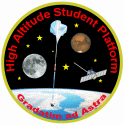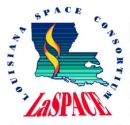



Payload 06 Information
Payload Flight Number:
Institution:
Payload Title:
The Greenhouse, Ozone and Atmospheric Trace gas (GOAT)
Student Leader:
Faculty Advisor:
Payload class:
Small
Payload ID Number:
06
Mass:
2.3 kg
Current:
NOT SUPPLIED
Serial Downlink:
YES
Analog Downlink:
NO
Serial Commands:
YES
Discrete Commands:
NO
Payload Specification & Integration Plan
Due: 06/23/2017
Delivered:
Payload Integration Certification
Scheduled: 08/04/2017
Actual:
Flight Operation Plan
Due: 07/28/2017
Delivered:
Final Flight / Science Report
Due: 12/08/2017
Delivered:
Abstract:
Sulfur dioxide (SO 2 ) is a gas that is found in the atmosphere at varying levels depending on geography, season, and other climatological variables. Volcanoes naturally contribute to worldwide SO 2 levels but 99% of atmospheric SO 2 is anthropogenic. Ambient sulfur dioxide needs to be accurately monitored as it leads to acid rain, ecosystem destruction, and climate change. The Greenhouse, Ozone and Atmospheric Trace gas (GOAT) project would compare and contrast the results of discrete SO 2 collection methods. GOAT will fly on a balloon-borne platform with a calibrated SPEC Arduino Analog Sensor Module for SO 2, a pair of Ogawa passive samplers, and microbial cultures of Saccharomycescerevisiae and Lactobacillus in order to evaluate their usefulness for measuring the presence of upper atmospheric SO 2 . Temperature, pressure, and humidity data will be collected in order to maintain the integrity of the data and inform the environment for controls in the lab. Post-flight data will be analyzed in the atmospheric laboratory at North Carolina Central University. The results recorded during GOAT’s flight will add to the scientific understanding of SO 2 levels in the upper atmosphere as well as identify best practices for future balloon-borne atmospheric collection experiments.
Payload Application:
Payload Integration Plan:
Science Report:
Monthly Briefings:
|